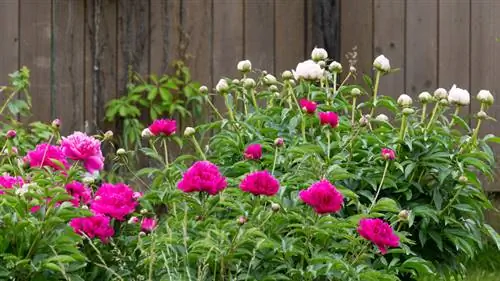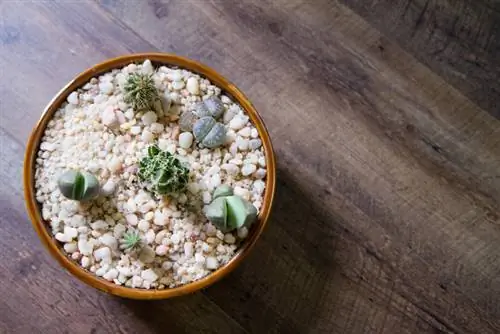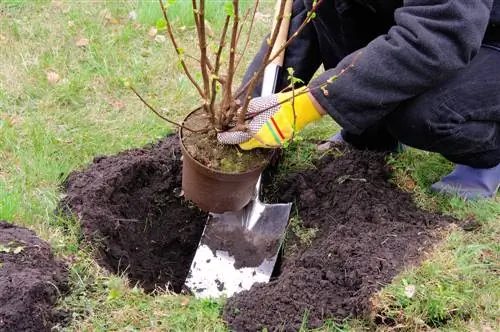- Author admin [email protected].
- Public 2023-12-16 16:46.
- Last modified 2025-01-23 11:20.
The iris, also known as the iris, takes several years to bloom when grown from seeds. That is why the tuberous rhizomes are usually used for propagation and initial planting in the garden.

How should you plant iris rhizomes?
For planting iris rhizomes, choose a sunny location and loose, humus-rich soil with lime content. Plant the rhizomes in late summer or early fall, about halfway buried in the soil, without a mulch cover. If necessary, use hill planting if the soil is impermeable.
Preparing the site for planting
As soon as you have chosen a location in the garden that is as sunny as possible for the iris, you should check the condition of the substrate with a shovel. In a humus-rich, loose soil with a certain amount of lime, the iris needs little care and fertilization in order to thrive with flowers. You can loosen up a clayey subsoil by adding sand and thus prevent waterlogging, which is very dangerous for the iris.
The ideal planting time for irises
The optimal planting time for irises is directly after flowering. Since the flowering period of the iris for the various subspecies is between April and September, the ideal planting time is late summer or early autumn. This means that the rhizomes can grow their fine roots into the surrounding soil in the new location before winter. During winter rest, the irises must not be covered with mulch like other plants, otherwise they can easily rot.
Rejuvenate old stands through division and new planting
Especially the species of iris that are closer to wild forms and have rather small flowers can produce flowers in the same location for many years without any special care. However, if the iris no longer blooms despite high levels of sunlight and loose soil, it may be time to divide the rhizomes. To do this, follow the steps below:
- carefully digging out the rhizomes in autumn with a suitable digging fork (€139.00 on Amazon)
- cutting the tubers into fist-sized pieces
- with strong propagation and selection, preferred selection of young side shoots
- planting not too deep in soil loosened with compost
Tips & Tricks
If you want to plant irises in rather impermeable soil, you can also use a trick: When planting a hill, pile up soil in order to insert the rhizome about half or two-thirds deep into the mound. However, with this method you have to be careful that the piled up soil is not washed away by the rain.






